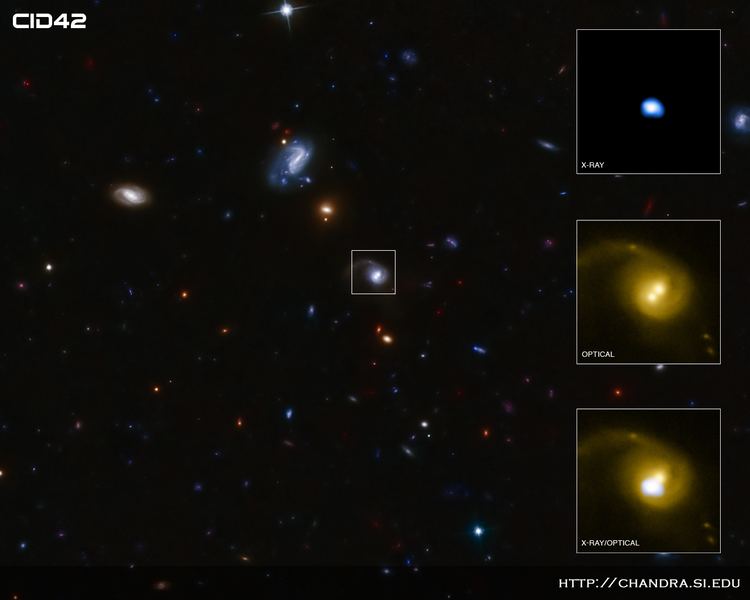Right ascension 10 00 29.06 Redshift 0.359 Distance 3.9 billion | Declination +02° 05′ 31.33″ Helio radial velocity 89302 km/s Apparent magnitude (V) ? | |
 | ||
Cid 42 simulation of black hole ejection
CID-42 (also known as CXOC J100043.1+020637) is a galaxy quasar about 3.9 billion light years away in the constellation Sextans. It is believed to have a supermassive black hole at its center.
Contents
Cid 42 in 60 seconds
Description
CID-42 is thought to be the result of a galaxy collision between two smaller galaxies. It has a distinctive trail of stars extending many light years.
Black Hole
The discovery of a potential black hole was made after combining through the data and images taken by several telescopes including NASA's Chandra X-ray Observatory, the Hubble Telescope, the Canada-France-Hawaii Telescope and from the ground-based Magellan and Very Large Telescopes in Chile.
When the two galaxies collided the black holes in their centers collided, forming a single supermassive black hole. The black hole then recoiled from the gravitational waves produced by the merger and is being ejected out of the galaxy at several million miles per hour (~2000 km s−1).
Once ejected it is expected to shine as a displaced quasar for 10 million to 10 billion years until it exhausts its fuel and is no longer recognizable as a quasar.
